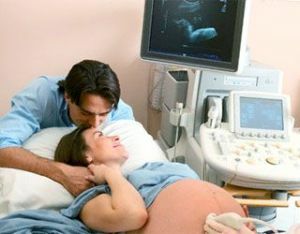 Congenital thrombophilia is usually inherited, sometimes it can occur as a result of some kind of mutation.
Congenital thrombophilia is usually inherited, sometimes it can occur as a result of some kind of mutation.
Similar thrombophilia is also called genetic .In this case, we are talking about violations at the genetic level. This disease manifests itself in all different ways. Quite often for a long time it does not make itself felt.
Surgical interventions, injuries, pregnancy, immobilization of limbs can contribute to their manifestation. Because of this violation, serious health problems can occur over time.
Contents of
- Why does pregnancy complicate an already serious disease?
- What consequences can thrombophilia have in pregnancy
- Diagnostic methods
- Pregnancy planning for thrombophilia
- How to increase the chances of bearing a child
- Treatment procedures
- Possible complications
- Findings
Why does pregnancy complicate an already serious disease?
It is natural and quite normal that during pregnancy, the blood coagulability increases in women. This physiological change is aimed at reducing blood loss during labor and other complications - miscarriage, placental abruption.
Very often in pregnancy, genetic thrombophilia makes itself felt.
This is explained by the appearance of another circle of blood circulation - placental, which exerts an additional load on the circulatory system. This circle has unique features that contribute to the formation of thrombi.
 Why is it important to detect mesenteric thrombosis of the intestines in time and how to do it you can learn from our material.
Why is it important to detect mesenteric thrombosis of the intestines in time and how to do it you can learn from our material.
How the development of surface thrombophlebitis and methods for preventing disease are discussed here. The article also deals with therapeutic procedures in case of illness.
What consequences can thrombophilia have in pregnancy
As a rule, thrombophilia is harmless for women, but in pregnancy the consequences can be the most deplorable.
The risk of thrombosis increases 6 times. The greatest danger is a possible miscarriage.
If a woman has a genetic diagnosis of hereditary genetic thrombophilia and pregnancy coincided, the childbirth often occurs before the term.
This occurs usually between 35 and 37 weeks. This finale can be considered successful.
Sometimes, blood clots in the vessels of the placenta provoke placental insufficiency. This, in turn, leads to oxygen starvation or delayed development of the fetus.
Specialists say that complications usually appear after the tenth week of pregnancy. 
Until this time, there is no information about the effect of thrombophilia on the development and bearing of the fetus.
The second trimester of pregnancy in women with thrombophilia in most cases is calm and without complications. The risk rises after 30 weeks. During this period severe forms of gestosis or phyto-placental insufficiency may appear.
Diagnostic methods
One of the main methods of diagnosing the disease is a blood test, which is examined in several stages:
- The first is the screening .Its main goal is the detection of pathologies in a specific link of the coagulation system.
- The second stage is a specific analysis of for thrombophilia in pregnancy.
With the help of screening tests, the following forms of thrombophilia can be identified:
- Increase in blood viscosity and increase in hemocrit indicates a hemorheological form of thrombophilia.
- An increase in platelet aggregation indicates the presence of thrombophilia caused by hemostasis disorder.
- Determining the level of antithrombin tells about the lack of primary anticoagulants.
- "Cuff test" will allow to judge thrombophilia caused by a violation of the fibrinolysis system.
- The presence of lupus anticoagulant is a sign of autoimmune tombophilia.
If you have the following indicators for a pregnant woman, you should think about the development of thrombophilia and its possible consequences - polycythemia, erythrocytosis, a decrease in ESR, isolated hyperthrombocytosis, an increase in hematocrit.
Moreover, changes in the shape and size of red blood cells can cause thrombosis.
Pregnancy planning for thrombophilia
 Preventing thrombophilia should be done before conception. Timely initiation of therapy will ensure a normal process of placentation and implantation of the embryo.
Preventing thrombophilia should be done before conception. Timely initiation of therapy will ensure a normal process of placentation and implantation of the embryo.
The appointment of treatment at a later date of pregnancy, significantly reduces the chances of bearing a child without complications.
During the preparation for conception of women diagnosed with thrombophilia, the following preventive measures should be observed:
- Sanitation of foci of infection - genitalia, oral cavity and so on. Her presence can promote thrombogenesis.
- Admission of anticoagulants after any surgical intervention, including minimally invasive manipulation.
- Adherence to anticoagulant therapy during and after pregnancy( minimum 6 weeks).
For prophylactic treatment of thrombophilia, the following preparations are used:
- folic acid;
- low molecular weight heparin;
- B vitamins;
- antiplatelet agents;
- Omega-3 fatty acids;
- natural progesterone.
How to increase the chances of bearing a child
Future mothers with a diagnosis of thrombophilia need special supervision.
Important importance should be paid to the results of ultrasound, as well as the study of blood flow in the placenta.
In the first trimester, there is a decrease in vascularization in different areas of the placenta, which can serve as a prerequisite for the formation of chronic insufficiency.
Up to 8 weeks, women can do the rheumatic echography of placental blood flow .This is the most informative method for determining complications in the early stages.
In the second and third trimester, you need constant monitoring of the baby state with the help of dopplerometry, fetometry and cardiotocography of the fetus.
In preventing the development of complications during pregnancy, the main place is occupied by antithrombotic therapy, which is harmless for both the mother and the child.
Therapy can be considered successful if a woman does not have severe forms of gestosis and thrombosis during pregnancy, there is no threat of pregnancy failure, there are no signs of fetoplacental insufficiency and placental abruption.
Against the background of suitable therapy, the indicators of thrombophilia markers come back to normal. In the future, these parameters remain at a level characteristic of normal physiological pregnancy.
Treatment procedures
The main purpose of treatment procedures for thrombophilia during pregnancy is the elimination of complications. During the non-drug treatment of it is necessary:
- wearing medical compression knitwear or elastic bandages,
- avoiding prolonged standing and lifting weights,
- doing physical exercises,
- doing massage,
- doing swimming,
- phytotherapy,
- proper nutrition, elimination of fatty and spicy food,
- electromagnetic therapy.
During the medical treatment of thrombophilia in pregnant: 
- The reception of medications that help strengthen the walls of blood vessels, improve blood properties and microcirculation. For example, calcium supraparin.
- In cases of acute thrombosis of cerebral vessels, if intracranial hemorrhage was avoided, anticoagulants are used. To prevent cerebral edema, doctors prescribe a radio tape recorder or dexamethasone.
Possible complications of
Many drugs have side effects, manifested in the development of a predisposition to increased blood clot formation. These qualities are contraceptive-estrogens and some groups of cytostatics.
This list can be replenished with heparin and thrombolytics.
Thrombocytopenia , which occurred on the 2nd - 3rd day after treatment with heparin, is called early. Late can appear after 1-1,5 weeks, it is characterized by such symptoms as thrombosis and bleeding simultaneously.
To prevent undesirable consequences of such therapy, one should not forget about prevention, and the use of thrombolytics and heparin should be combined with tiklide, acetylsalicylic acid and others.
Conclusions
 Thrombophilia is not a verdict. It is not synonymous with infertility.
Thrombophilia is not a verdict. It is not synonymous with infertility.
If you follow the recommendations of doctors, chances are good to endure and give birth to a healthy child. Of course, you are unlikely to endure the baby until 40 weeks.
But with a high level of today's medicine, a premature baby does not mean at all - a patient.
Thanks to modern technologies and equipment, it is possible to care for babies born and at earlier times. Therefore, all you need is to constantly remember the risk, follow the doctor's recommendations and be optimistic.
